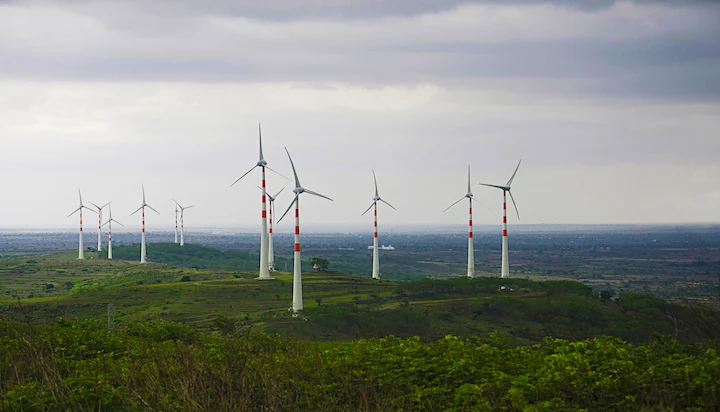Even without solar panels on your roof, you can claim renewable energy for a bit of cash.
Climate change concerns are driving an explosion of renewable energy growth. In the past decade the number of people and companies voluntarily buying renewable energy and the amount of money they spent have roughly quadrupled. But electricity behaves in a way that makes it impossible to track. Once it is on the grid, electricity from renewable sources can’t be separated from fossil fuels. How can consumers be sure they’re buying green energy?
Renewable energy certificates solve this problem. They allow companies and individuals to meet renewable energy goals, even when renewable energy isn’t locally available. They’ve helped rapidly spread renewables in recent years and provide additional income to generators of renewable energy. If any individual, company or organization can truthfully claim to be powered by renewable energy, it’s thanks to renewable energy certificates.
What are renewable energy certificates?
Every time a renewable power source generates one megawatt hour of electricity (about what the average American house uses in a month) it also generates one renewable energy certificate, which represents the environmental benefits of that megawatt hour. While the electricity zips off to power a factory or toaster or street light, the REC stays with the energy producer, until they decide to sell or retire it.
Retiring an REC takes it out of circulation (it can’t be sold again) and allows whoever retires it to claim the environmental benefits of that one megawatt hour.
Let’s say Company A has solar panels that provide all its energy needs for the year, but sells the RECs to Company B. Unless Company A buys RECs from somewhere else, it can’t claim to use renewable energy. If Company B retires the RECs it bought, it can claim to have used that much renewable energy.
Remember, since all electricity on the grid looks the same, whoever retires the RECs gets to claim they’ve used it.
Buying and selling RECs
REC prices are determined by supply and demand, which is often impacted by state policy.
Some states have renewable portfolio standards, which require utilities to generate a certain amount of renewable electricity, sometimes from specific sources like solar. Utilities can meet the standards by building their own renewable energy projects or by buying RECs. REC sales to satisfy state mandates are known as the compliance market.
But a ton of RECs are bought and sold for nonregulatory reasons on what’s called the voluntary market. That’s where companies meeting voluntary goals and individuals looking to green their energy consumption turn. Anyone can buy or sell a REC here.
There are a few ways individuals can jump into the voluntary market.
They could buy from the market, either directly or with the help of a broker or online service.
Some utility customers can sign up for green pricing, where they pay a green pricing premium that the utility uses to retire RECs on their behalf. In 2020, a little over a million utility customers bought RECs this way, purchasing 11.6 million megawatt hours worth of renewable electricity.
Of course, if you have a solar array on your rooftop or property, you’re generating RECs along with electricity. You can sell those and make some extra money or retire them and tell everyone the electricity you use is renewable.
The REC compliance market is divided into eight states or regions, and the supply and demand within the region influences the price of RECs within those markets. In Massachusetts, bids for solar specific RECs reach $284. But in Ohio, where the market is flooded, one goes for $10.
Some larger organizations like utilities with renewable energy requirements will swap RECs by selling their expensive RECs and buying cheaper ones to turn a profit. Individuals most often engage with the market to cover their energy use or sell RECs from their rooftop solar. (REC brokers I spoke to for this story said very little speculation happens on the part of individuals.)
For individuals, investing in RECs is not to grow personal wealth, but to grow the renewable energy sector and cover their energy use.
Not all RECs are created equal
One of the main goals of establishing a REC market is additionality, or whether it supports the creation of new renewable energy.
“A 50-year-old hydro facility could be spitting out RECs for another 30 years, and it’s not going to result in one single new megawatt hour of renewable energy being generated,” said Jeff Swenerton, the communications director for Center for Resource Solutions. Center for Resource Solutions runs the Green-e Energy program, the leader in certifying RECs.
Green-e Energy certifies RECs that are most likely to support renewable energy projects. Certification requires that RECs come from facilities that weren’t built for compliance reasons and are less than 10 years old (or were significantly updated within that time).
“While companies that buy [RECs] from older facilities can make a claim to renewable energy, the reality is their impact is lessened,”Swenerton said.
Solar panels, windmills, hydroelectric generators without dams, biomass digesters, geothermal stations and some hydrogen cells generate RECs. So renewable doesn’t always mean carbon free. Biomass generates natural gas, which still has associated carbon emissions.
Green-e energy certification is voluntary, Swenerton said. Uncertified RECs can be just as effective, but people can buy certified RECs with confidence.
From his perspective, the REC market is having its intended effect.
“What’s happening right now is something that we have wanted to happen for years, which is demand for renewable energy across the board is booming,” he said.
Source-cnet.com









